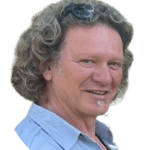Truffle therapy
The most up to date page about truffle therapy: Truffle therapy
The therapy with truffles in combination with our preparation and guidance is what we call trip therapy. We prefer truffles because they contain psilocybin, just like magic mushrooms. Unlike other psychedelic substances, magic truffles are legal in the Netherlands, while they are the best-working psychedelics against anxiety, depression and low self-esteem.
Read more about this here the effect of psychedelic therapy
More information
Would you like to know how we can help you with psychedelic truffle therapy? We help in several areas. We coach the psychedelic truffle trip and we also provide nutrition and exercise advice to complete the picture. Your health in all areas determines the quality of your life.
You can count on us for the best trip coach for your situation. Everyone is different and everyone needs a different plan. May we assist you on the journey to better well-being?
Read more about this here our method
Start intake
Are you already convinced and would you like to take immediate steps by registering? This can be done via the website. First, you can create a login code for an account.
After registering an account, you can complete a neurotransmitter test and intake details so that we can get a better picture of your situation.
Contact
After you have completed the intake and test, you can give us a call and we can then process your intake and test. You can also contact us if you have any other questions. Choose a medium that you feel comfortable with.

Public questions via forum: click here
Telephone: +31640898455
E-mail: [email protected]
Contact Form: click here
Facebook: click here
Twitter: click here






